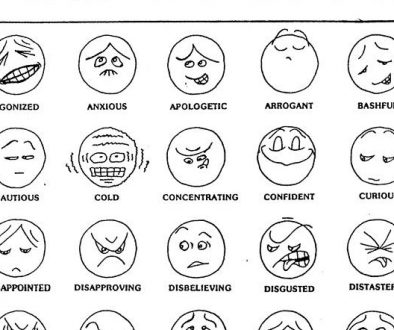Why did the chicken cross the road? by Jim Manske

My guess is before you even finished reading that sentence, you already knew the answer. That ancient childhood joke has become part of how we experience the world at an intuitive level.
Remarkably, for me, the joke contains an important insight into Nonviolent Communication (NVC).
As humans, we intuitively know that every behavior is motivated by a “why”, even the behavior of a chicken.
So, let’s change the joke slightly and consider, “Why did the giraffe** open her mouth?” The answer? To get to “the other side of connection.” We humans intuitively know that opening our mouth (and our ears) supports the connection we need, not only to survive, but to thrive as individuals and as a community. This understanding represents a deep insight into how to live NVC consciousness, how to make living that process more natural, and shines the light of awareness on why NVC seems to fail us sometimes.
Three questions arise:
- Why does NVC seem to fail us sometimes?
- How can you make living the process more natural?
- How does one live NVC consciousness?
First things first: Why does NVC seem to fail us sometimes? Because of the way we have been educated, we habitually open our mouth in the service of correction, rather than connection. We are sometimes quick to judge another person’s behavior as wrong (and ours as right); we scan for people that are bad, and think its our job to straighten them out; we take on the role of moral authority, deciding not only what is or is not appropriate, but also who deserves to be punished or rewarded. We think its our job to play the roles of police, prosecutor, judge, and sometimes even executioner. We may even turn our corrective wrath on ourselves, ruminating about our own bad thoughts or behaviors, then feeling guilty, ashamed, anxious or depressed.
Operating from this intention to correct temporarily blocks the consciousness of NVC. It’s as if we armor our heart with a protective layer of separateness, anxiously scanning for threats and enemies. Tragically, this habit can get in the way of another receiving the contribution that we would like to give. And it gets in the way of getting our own needs met!
So, now looking at the second question, “how can we make living NVC more natural and available?” The quick answer is to notice more often how we naturally live NVC. In other words, train yourself to notice the times when connection flows easily, when you are joyfully receiving another person’s contribution to you and when you are openly giving to another without expectation of reciprocity.
Check your memory right now for instances when you said a genuine thank you, when you offered support to another or when you responded to another person’s request with an open heart. All of those are examples of living NVC. You can make this reality more of your lived experience by simply noting at least three examples of this each day in a gratitude journal. Writing just a three sentence report about “what’s going well” in your life can have a profound impact on well-being.**
My guess is that you live this consciousness more often than you recognize. See what happens if you watch for opportunities to acknowledge and notice gratitude and other life-fulfilling emotions.
Now, to the final and most vital question: How does one live in NVC consciousness?
Three important concepts help us to answer the question:
- Presence
- Clarity of intention
- Openness to outcome
Presence
Living NVC always happens now. Notice and refine your sense of presence. Presence is actually our default mode. Are you present to the words that you are reading right now? If yes, that is presence. If you notice you are distracted momentarily with a thought of the past or the future, notice that your awareness of that absence happens right now. So, even the awareness of absence is a sign of presence.
Notice presence.
Clarity of Intention
Marshall Rosenberg, the developer of NVC, once suggested in a workshop that I attended that if we want to live NVC, the first step is to “know what you want before you open your mouth.”
I used to interpret this to mean that the first step in a communication is to know what our desired outcome is. Now I understand that rather than visualizing or imagining what I want to happen, Marshall was pointing us to a clarity of intention. Knowing which strategy to use to contribute to a need comes later.
Now I endeavor to, keep my focus on what Marshall called “Spiritual Clarity”.
The word spiritual points towards an acknowledgment that we live interdependently. Your needs and my needs co-exist. If I get my needs met at your expense, we will both pay. And the opposite is also true: If you get your needs met at my expense, we both will pay. How do we pay? With disconnection, resentment, and suffering.
Clarity points to a deep and profound connection to this reality of interdependence.
When I live from this quality of spiritual clarity, my behaviors will more likely contribute to making life wonderful for everyone involved.
Openness to Outcome
The natural consequence of Presence and Clarity of Intention is an openness to outcome. We liberate ourselves in advance from any addiction to “one right way” to get our needs met. By staying connected to Needs rather than becoming attached to a specific strategy, we support a flow of connection that inevitably leads to compassionate giving and receiving.
The nickname we give to the combination of these three elemental concepts is “the Zero Step”. The Zero Step points to what we do in our consciousness before using the four components of NVC developed by Marshall (observation, feeling need and request). Ironically, when we live in the Zero Step, the four steps fade away into a naturally connecting language.
So, now we arrive at Marshall’s definition of the purpose of NVC: “To create a quality of connection that inspires compassionate giving and receiving.” And three elements help us to fulfill that purpose:
- Presence: What is happening right now? How do you feel right now? Who needs what right now? What would make life more wonderful right now?
- Clarity of Intention: Do I want to connect in the service of compassionate giving and receiving? Or do I want to correct? If the latter, the antidote is empathy and self-empathy to regain contact with our Spiritual Clarity.
- Openness to Outcome: We finish our expression with a request, not a demand. We only want to receive from another what they willingly want to contribute. If we notice we are attached to an outcome, its a signal we need empathy!
Three quick practices:
- Presence: Ask yourself, “Am I aware? What do I see, hear, smell taste, or touch, right now?
- Clarity of Intention: Ask yourself, “Do I want to connect or do I want to correct?”
- Openness to outcome: Consider any universal human need and make a list of all the ways that need could be satisfied. For example, consider the Need for love: How many different ways have you had that Need satisfied in your life? (A hug, a kind word, a gift, an act of service, spending quality time with someone, etc)**
So, from now, we live with a new awareness that can arise just before we next open our mouth. Where are we going, connection or correction?
We can claim our natural intuition and inclination to contribute to making life wonderful by connecting. Or we can notice, with ever increasing awareness, how our old habits of correction may still run reactively.
Each moment, we choose which destination we seek. And the next moment, we can choose once again.
*Giraffe is the term Marshall Rosenberg used as a nickname for NVC and its practitioners. Since giraffes have long necks, they can easily make observations. And, an anatomical consequence of that long neck is the strongest heart of any land mammal. It takes a lot of power to pump that life-enriching blood up to the brain of the giraffe! Thus, NVC, or giraffe language, is also know as the language of the heart.
**See Flourish, by Martin Seligman, Ph.D.
***Inspired by Gary Chapman’s Five Love Languages



